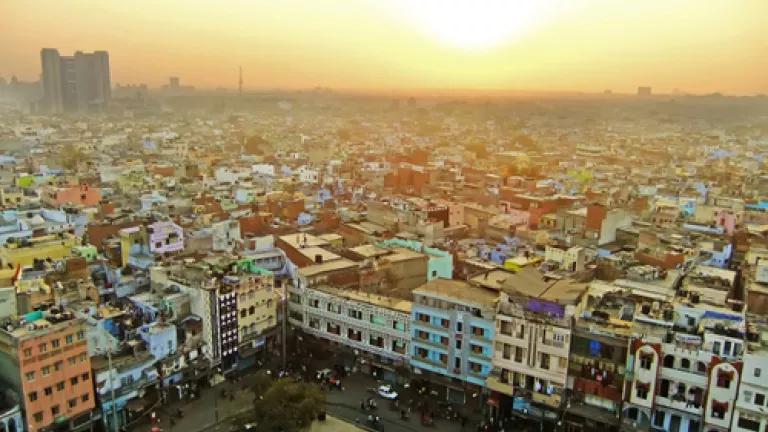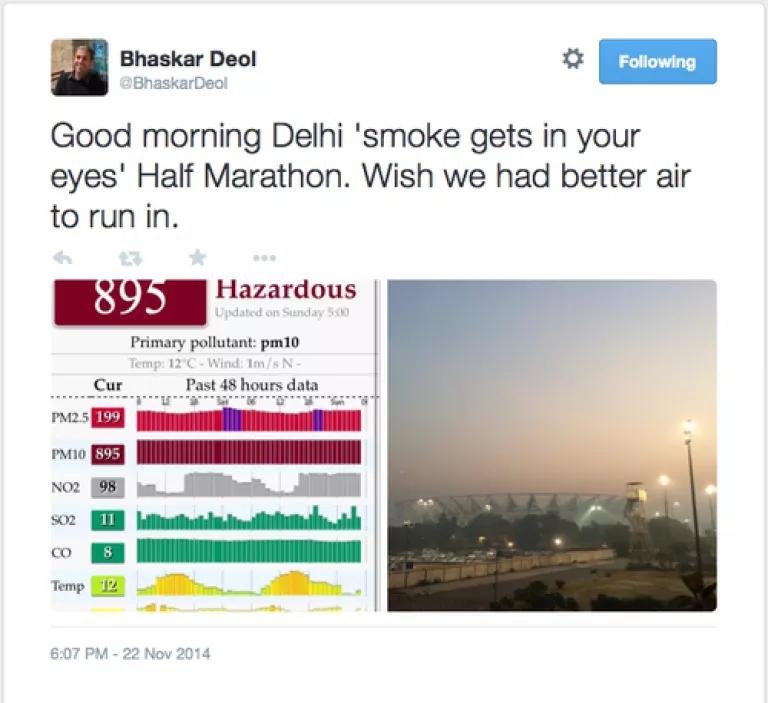
This version of the article was originally published in Canadian Running on November 24, 2014.
Sunday marked the 10th anniversary of the Delhi Half-Marathon and Great Delhi Run in the Indian city. The race has come to be known for producing some of the fastest times in the world. But less reported are worries about air pollution in the city causing problems for runners.
This year, New Delhi, a metropolitan area with a population of nearly 23 million, passed Beijing as the city in the world with the worst air quality. Living in the city is about as good on your lungs as smoking 20 cigarettes per day. It’s not uncommon to hear of locals and travellers coughing up dark brown and black phlegm.
Air quality levels in New Delhi top limits considered safe to exercise in by North American standards almost daily, fairly regularly reaching over four times what’s considered safe. Despite this, behind the elites in Sunday’s event were 32,000 runners who competed in the half-marathon and 7K fun runs. The running industry in India is booming.

This brings up a question of how safe these events are for participants. Last month, a marathon in Beijing brought attention to the subject when smog levels on the day of the race were particularly bad — 16 times what’s considered safe in North America. Participants donned breathing masks which, when the race was over, were stained black. The quick answer seems to be that exercising in this smog is still better than not exercising in it while living in it, but some have their doubts. While running, a lot more air is cycled through the lungs and the runner breathes much deeper than while they are at rest. Some research has suggested that a over the course of a race a trained marathon runner will breathe as much air as a sedentary person would over two full days.
The problem of smog isn’t contained to other areas of the world. Though less frequent than in past decades, North American cities can struggle with dangerous levels of pollutants in the air, the most notorious being Los Angeles and Mexico City, both cities that support large marathon races and many other running events.
The smog in Delhi is caused, in part, by the near-legendary traffic problems that snarl the city’s streets, but that’s not the only issue all the vehicles can cause for runners. Among many reasons for the daily gridlock is the collective ignoring of signs and signals in the city, something that can extend to road closures. Though Sunday’s race seems to have been spared, it’s not uncommon to hear of drivers in the city and at other Indian events ignoring road closures and driving the streets alongside runners, a problem experienced last month in Bangalore.
Still, with large enough appearance fees and prize purses the elites will still show up. Top marathoners Mary Keitany and Geoffrey Mutai have both won the race there. The women’s race was won by Florence Kiplagat of Kenya. Ethiopian Guye Adola won the New Delhi event in 59:06, a new course record, but was reportedly suffering from a bad cough after the race and told reporters the air quality was a problem.
